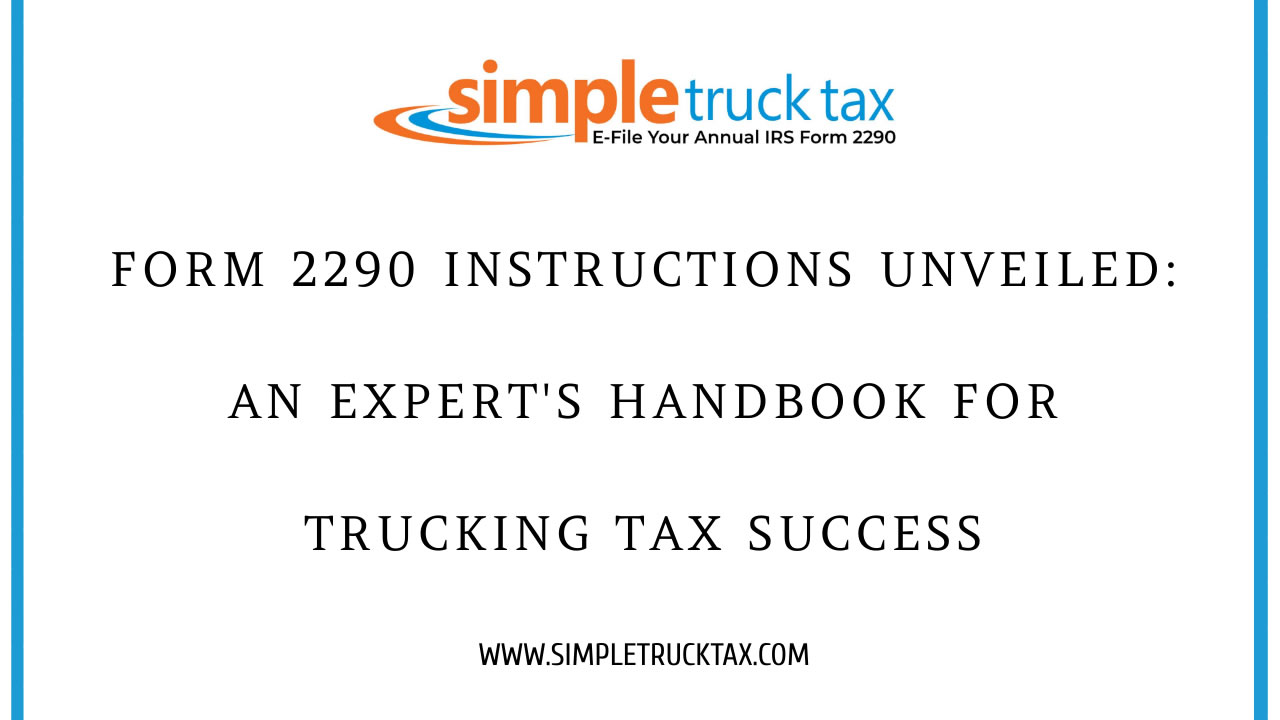
Form 2290 Instructions Unveiled: An Expert's Handbook for Trucking Tax Success
Every trucking company operating in the United States is familiar with the complexities and responsibilities surrounding taxes. One crucial form that truckers need to be well-versed in is Form 2290, also known as the Heavy Vehicle Use Tax (HVUT). In this blog post, we will provide you with a comprehensive guide to the Form 2290 instructions, ensuring your trucking tax success.
1. Understanding Form 2290: What is it?
Form 2290 is a tax form filed with the Internal Revenue Service (IRS) by truck owners to report and pay the HVUT. This tax is imposed on vehicles operating on public highways with a gross weight of 55,000 pounds or more. It is an annual tax that helps fund the maintenance and construction of highways and bridges across the country.
2. Who Needs to File Form 2290?
Trucking companies and owner-operators who own vehicles with a gross weight of 55,000 pounds or more are required to file Form 2290. This applies to both domestic and foreign vehicles that are used in the United States.
3. Important Deadlines and Payment Options
The Form 2290 filing period begins on July 1st and ends on June 30th of the following year. However, the deadline for filing Form 2290 and paying the HVUT is August 31st. It's crucial to adhere to this deadline to avoid penalties and interest charges.
When it comes to payment options, the IRS offers several methods, including Electronic Funds Withdrawal (EFW), Electronic Federal Tax Payment System (EFTPS), credit or debit card, and check or money order. Choose the method that works best for you, ensuring that you have sufficient funds to cover the required tax amount.
4. Steps to File Form 2290
To successfully file Form 2290, follow these steps:
- Obtain an Employer Identification Number (EIN) from the IRS if you don't already have one
- Gather all necessary information, including vehicle identification numbers (VINs), taxable gross weight, and the first month of vehicle use.
- Choose your preferred filing method. You can file electronically or by mail.
- If filing electronically, select a trusted e-file provider to simplify the process and ensure accuracy.
- Pay the HVUT using one of the IRS-approved payment options.
- Keep a copy of the filed Form 2290 for your records.
5. Penalties for Late Filing or Non-Compliance
Failing to file Form 2290 or pay the HVUT by the deadline can result in substantial penalties and interest charges. The penalty for late filing is 4.5% of the total tax due, increasing monthly up to 25% of the unpaid tax amount. Therefore, it's essential to file on time to avoid unnecessary financial burdens.
Understanding and following the Form 2290 instructions is vital for trucking tax success. By familiarizing yourself with the requirements, deadlines, and payment options, you can ensure a smooth filing process and avoid penalties. Consider seeking expert guidance or utilizing trusted e-file providers to streamline the process further. Stay compliant and keep America's highways in top shape!